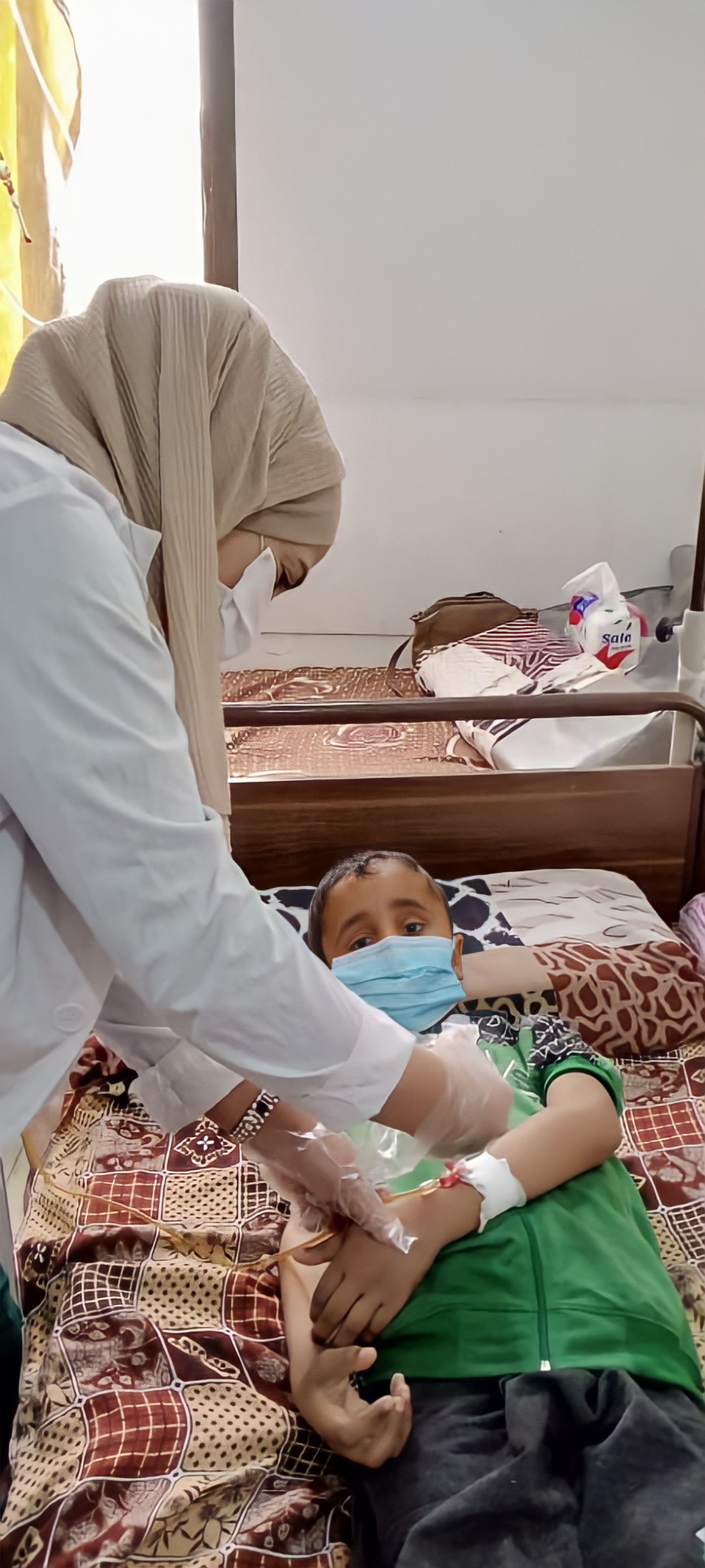 Saber, a 9-year-old boy from Deir-ez-Zor governorate is the only son of a vulnerable family that was forced to leave its village in search of security and shelter.Damascus, 6 October 2022 – The need for humanitarian aid in northeast Syria is constantly growing due to ongoing hostilities that continue to claim fatalities every day, as well as severe water shortages impacting health and livelihoods and exacerbating people’s suffering. In addition to treating children with malnutrition in northeast Syria, monitoring the quality of drinking-water, covering the operational costs of COVID-19 vaccination campaigns and the Essential Programme on Immunization activities, the continuous provision of medicines, equipment, personal protective equipment for health care workers, consumables, and medical supplies – through both crosslines deliveries, road and air shipments – WHO’s humanitarian health response in northeast Syria also includes supporting the referral health system.
Saber, a 9-year-old boy from Deir-ez-Zor governorate is the only son of a vulnerable family that was forced to leave its village in search of security and shelter.Damascus, 6 October 2022 – The need for humanitarian aid in northeast Syria is constantly growing due to ongoing hostilities that continue to claim fatalities every day, as well as severe water shortages impacting health and livelihoods and exacerbating people’s suffering. In addition to treating children with malnutrition in northeast Syria, monitoring the quality of drinking-water, covering the operational costs of COVID-19 vaccination campaigns and the Essential Programme on Immunization activities, the continuous provision of medicines, equipment, personal protective equipment for health care workers, consumables, and medical supplies – through both crosslines deliveries, road and air shipments – WHO’s humanitarian health response in northeast Syria also includes supporting the referral health system.
Saber, a 9-year-old boy from Deir-ez-Zor governorate is the only son of a vulnerable family that was forced to leave its village in search of security and shelter. The family was displaced multiple times until it ended up in the Areesha camp in northeast Syria. “We used to live in a tattered tent under harsh weather conditions. We walked through the desert in the heat with no food for days on end. We experienced a lot of pain, hunger, fear, and displacement until we finally settled in the Areesha camp,” Saber’s mother recounted. “A few months after Saber’s birth, he had been diagnosed with a brain cyst requiring surgery – an expensive procedure which we couldn’t afford,” the mother added.
In the camp, the child’s health deteriorated a little more each day. He began suffering vision impairments and severe headaches. Following examination by a mobile medical team, the child was referred to the WHO-supported Al-Hikmeh Hospital in Al-Hassakeh where he was admitted and started his treatment journey. Saber underwent surgery and received the needed medical interventions; his health improved gradually until he was discharged from the hospital, fully recovered.
As per 2022 estimates, more than 2.7 million people in the 3 governorates of northeast Syria require humanitarian assistance, including approximately 697 106 internally displaced persons and refugees who represent 90% of the referrals received and treated through the 55-bed Al-Hikmeh Hospital.
“Health needs across northeast Syria remain dire. The functionality of health facilities and availability of health human resources remain critically lacking with health systems unable to respond to the increasing needs and gaps,” said Dr Iman Shankiti, WHO Representative in Syria. “WHO is working with all partners to address wider health needs and to ensure that essential health services remain available in northeast Syria,” she added.
In 2021, thanks to kind donations from Australia, the Foreign, Commonwealth and Development Office (FCDO), Norway, and the Office of U.S. Foreign Disaster Assistance (OFDA), WHO’s agreement with Al-Hikmeh Hospital enabled the provision of trauma, secondary, and emergency care services to 8774 referred patients –mostly women and children – of whom 2356 were from the Areesha camp.
Based on the latest data of the Health Resources and Services Availability Monitoring System (HeRAMS), out of 16 public hospitals in northeast Syria, only one is fully functional, 8 are partially functional, and 7 are not functional, while only 2 districts meet the emergency threshold of at least 22 health care workers per 10 000 population, making the lack of health human resources a chronic challenge.




